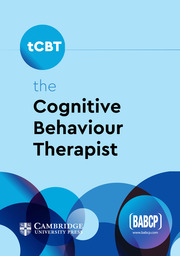No CrossRef data available.
Article contents
Bridging the language gap: a review of cognitive behavioural therapy with spoken language interpreters
Published online by Cambridge University Press: 05 September 2025
Abstract
Cognitive behavioural therapy (CBT) is a frontline treatment for a range of mental health problems and is increasingly offered as the psychological therapy of choice across the globe. Access to or benefit from this psychological therapy relies on proficiency in the dominant language of the area. However, to meet our clients’ needs in an increasingly mobile, multicultural, and diverse society, it may require adaptation through the use of spoken language interpreters. The benefits of interpreter-mediated CBT for mental health problems remains uncertain. The objective of this review is to systematically identify, evaluate, and integrate the existing empirical literature on interpreter-mediated CBT for mental health problems. A comprehensive search was conducted in July 2024 across CINAHL, MEDLINE, PsycINFO and Scopus. Studies meeting the inclusion criteria resulted in a total of eleven articles being included in the review. The included research shows promise in terms of feasibility and efficacy, but not conclusively. The narrative review enabled the synthesis of recommendations, which have been conceptualised as being at individual, service, and organisational levels. There is limited research and a need for further studies into the influence of other factors such as therapist proficiency, interpreter proficiency, complexity/co-morbidity and service context. Further evaluation should consider controlled trials of interpreter-mediated CBT, while also establishing its efficacy more robustly in regular practice. It should also further explore the experiences and perspectives of the client, interpreter, and therapist regarding the suggested recommendations.
- Key learning aims
(1) Gain an understanding of the existing evidence on the effectiveness of interpreter-mediated CBT for various mental health problems across diverse populations.
(2) Learn about key recommendations emerging from empirical research on the implementation of interpreter-mediated CBT.
(3) Acquire clear, practical guidance that can inform the work of interpreters, practitioners, services, and healthcare systems to improve the delivery of interpreter-mediated CBT.
Keywords
Information
- Type
- Review Paper
- Information
- Copyright
- © The Author(s), 2025. Published by Cambridge University Press on behalf of British Association for Behavioural and Cognitive Psychotherapies


Comments
No Comments have been published for this article.